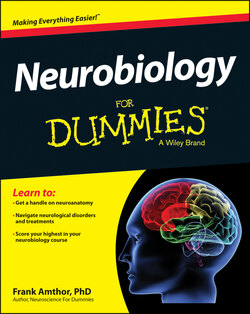Читать книгу Neurobiology For Dummies - Frank Amthor - Страница 49
Determining dominant and recessive traits
ОглавлениеOne allele (that is, one particular form of a gene) may completely override the expression of another, making this the dominant allele. The non-expressed allele, or the allele that doesn’t show up in the offspring as a trait, is called the recessive allele. For a recessive allele to be expressed in an offspring as a trait, the offspring must receive two copies of the same recessive allele. Otherwise, the traits associated with the dominant allele will be expressed. For example, the O blood type is recessive compared to types A and B. An AO father and BO mother would have A and B blood types, respectively, because the alleles specifying A blood type and B blood type are dominant. However, because these parents both have the recessive O allele, they could potentially produce an OO child. ( This happens about 25 percent of the time.)
Most traits, such as height, depend on several genes. These traits have more complicated, mixed inheritance, because each of a number of genes contributes something to the end result. Mutations, which are random changes in genes, can also occur. Mutations can convert one allele into another, or even create a totally new allele and corresponding trait. (Go to the end of this chapter for more about mutations.)
Mutations are fundamental to evolution because they allow species to change and adapt over time.
